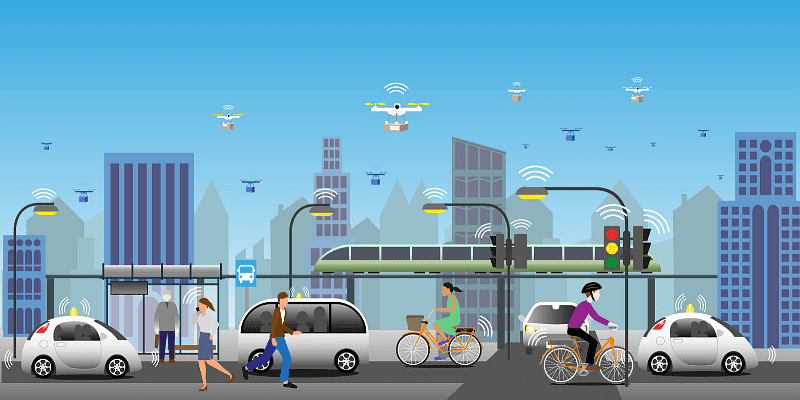Commuting in India’s metro cities is a daunting task. Millions rely on buses, metros, cabs, and autos daily—navigating multiple apps and systems. The lack of integration leads to frustration, wasted time, and increased costs. This complexity underscores the need for a more streamlined and efficient urban mobility system.
To address these challenges, analysing commuting patterns and identifying pain points is essential. One significant hurdle is “first and last-mile connectivity,” referring to the distance between public transport hubs and final destinations.
It varies greatly depending on location, requiring dynamic solutions. For instance, the distance from a metro station to someone’s final destination can range from 500 metres to 3 kilometres, highlighting the need for adaptable solutions.
Designing user-centric solutions is critical to overcoming these challenges. Effective Mobility-as-a-Service (MaaS) platforms must balance innovation with familiarity.
Commuters have established habits, and drastic changes can overwhelm them. A well-designed platform should offer an overview of available transport options for undecided users, tailored information for those with specific preferences, and ensure seamless integration across different transport modes.
Successful MaaS implementation requires cooperation between government transport bodies, private operators, and local service providers, ensuring a cohesive user experience despite multiple transport modes.
Flexibility is crucial as India’s urban commuters are diverse. Platforms must adapt to various needs, gathering feedback and analysing usage patterns. Machine learning models can predict peak travel times and popular routes, enabling real-time adjustments.
Effective MaaS platforms prioritise simplicity, convenience, and integration. Commuters can access all transport options in one place by consolidating multiple apps and systems.
Understanding and addressing “first and last-mile” needs is vital, as is balancing innovation with familiarity. Ensuring seamless integration across transport modes and fostering cooperation among stakeholders are also essential.
The benefits of MaaS platforms are far-reaching. Commuters will enjoy reduced travel times, lower costs, and increased convenience. Cities will benefit from decreased congestion, improved air quality, and enhanced economic productivity.
In India’s diverse urban landscape, MaaS platforms must cater to varying commuter needs, providing accessible information, accommodating different languages, and ensuring affordability.
To revolutionise urban mobility in India, MaaS platforms must seamlessly integrate with existing infrastructure, leveraging cutting-edge technologies like IoT and data analytics to optimise transport systems.
Artificial intelligence, cloud computing, and IoT will be game-changers in enhancing MaaS platforms, enabling India to set a global standard for urban mobility.
Embracing these technologies will allow for real-time data analysis, predictive maintenance, and smart traffic management, making commuting faster, safer, and more convenient. However, several challenges need to be addressed, including:
- Infrastructure limitations: Upgrading existing infrastructure to support MaaS platforms
- Regulatory frameworks: Creating policies to govern data sharing, privacy, and security
- Cybersecurity concerns: Protecting user data and preventing potential breaches
To overcome the challenges of implementing MaaS platforms, it’s crucial to have collaborative efforts from three key groups.
Government agencies play a vital role in providing regulatory support and infrastructure investments, including policies that govern data sharing, privacy, and security, and investing in digital infrastructure to support MaaS platforms.
Private operators, on the other hand, need to share their data and expertise to enhance MaaS platforms, which involves opening up their data to third-party developers, allowing for seamless integration with other transport modes.
For instance, taxi companies can share their real-time operation data to enable MaaS providers to offer equivalent services. Private operators can help create a more comprehensive and user-friendly MaaS experience by sharing their expertise.
Lastly, stakeholders are essential in ensuring public awareness and buy-in for MaaS adoption, including educating the public about the benefits of MaaS, such as increased convenience, reduced congestion, and improved air quality. They can also provide valuable feedback on the effectiveness of MaaS platforms, helping to identify areas for improvement.
In conclusion, streamlining urban commuting in India demands a comprehensive understanding of commuter needs and challenges.
We can create a more efficient, inclusive, and enjoyable urban mobility experience by addressing these issues through collaborative efforts and user-centric design.
Effective MaaS platforms will not only transform urban commuting but also contribute to the growth and sustainability of India’s cities. Ultimately, the success of MaaS platforms hinges on their ability to adapt to evolving commuter needs and technological advancements.
By prioritising user-centric design, cooperation, and flexibility, India can revolutionise urban mobility. As India continues to urbanise, the importance of efficient urban mobility will only grow. By embracing MaaS platforms and addressing the challenges ahead, India can create a better future for its commuters.
Narayan Mishra, Co-founder and CTO of Tummoc.
(Disclaimer: The views and opinions expressed in this article are those of the author and do not necessarily reflect the views of YourStory.)










